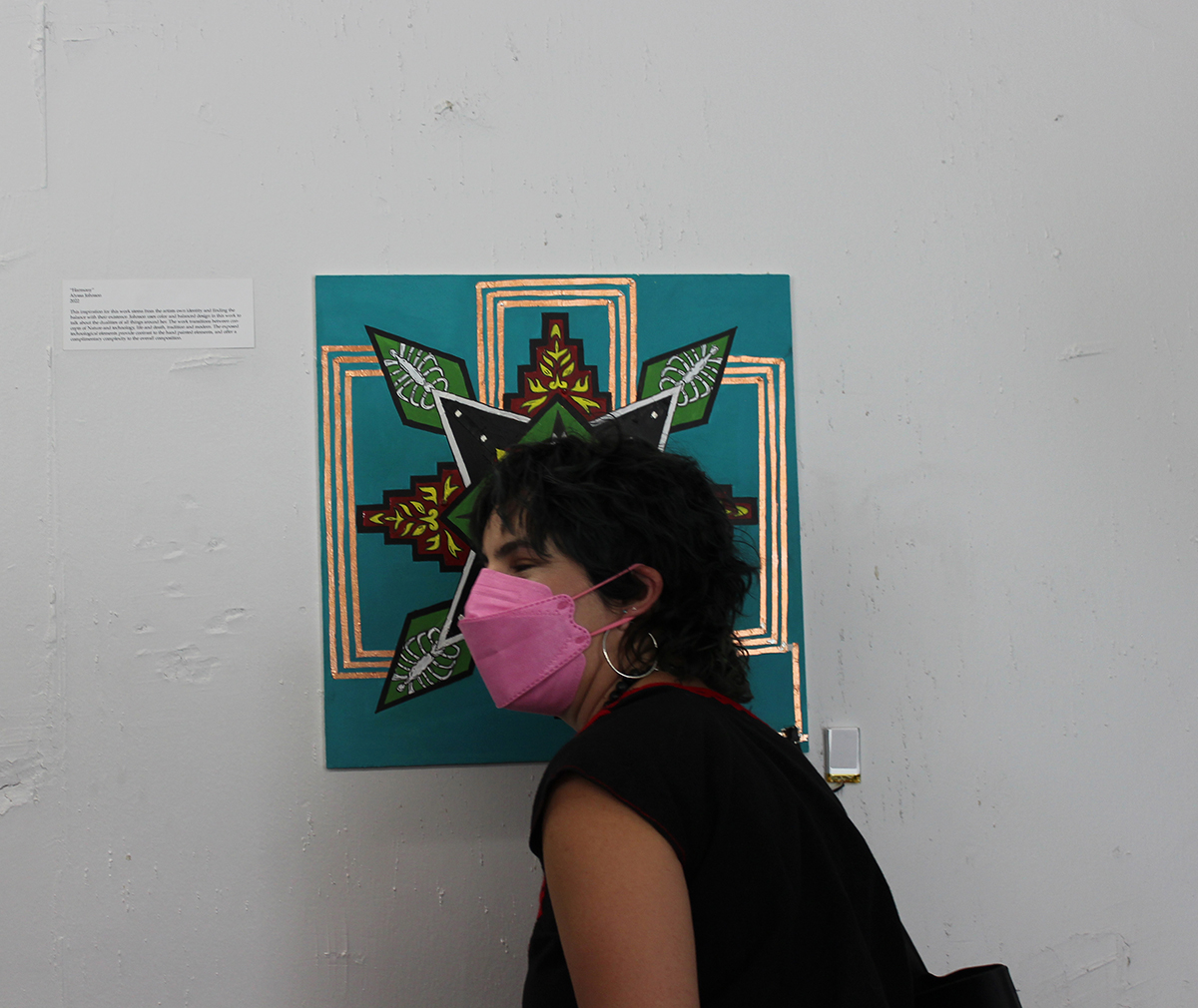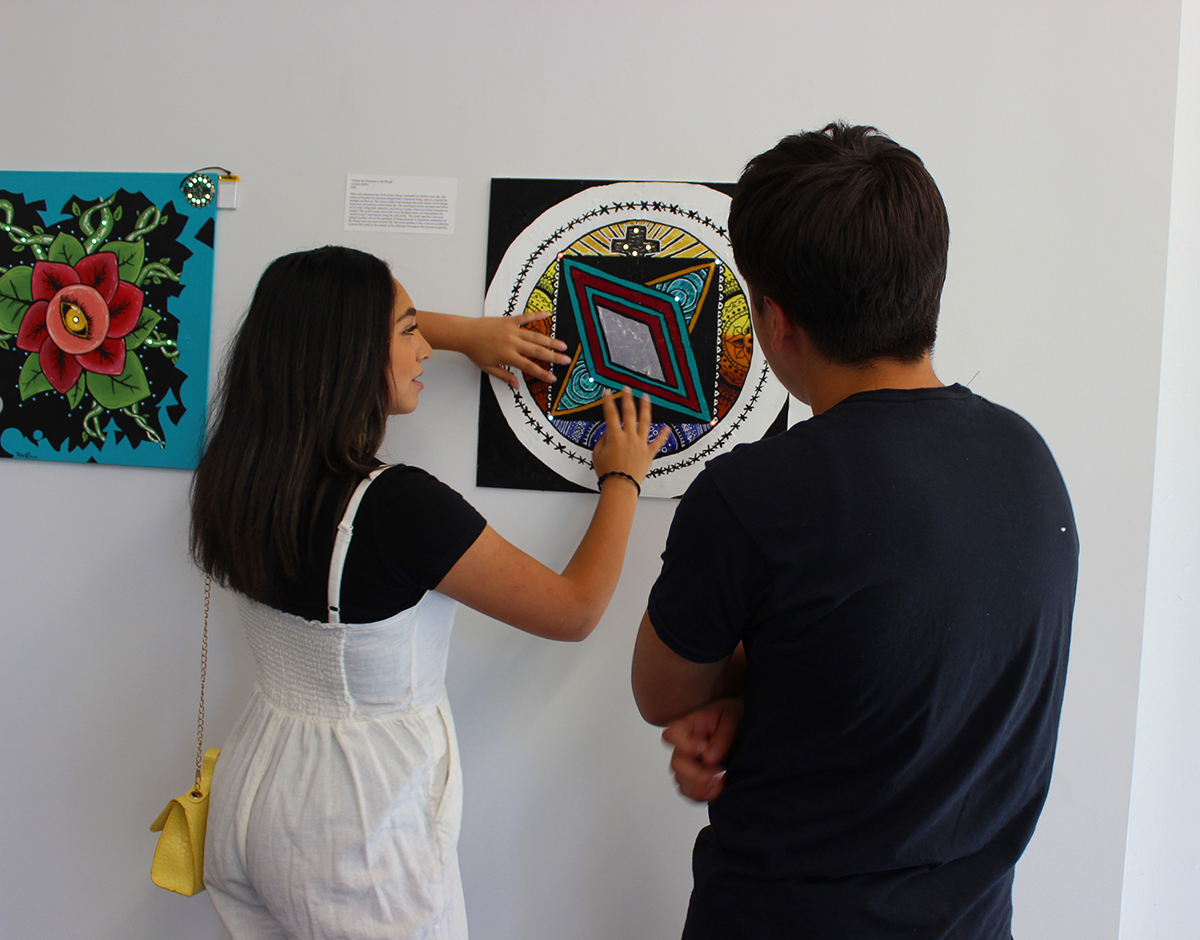Recent News
Perfetti receives ANS Landis Engineering Achievement Award
June 26, 2025
Engineering a new treatment for ovarian cancer
June 24, 2025
UNM engineers win 2nd place at RMWEA design competition
June 20, 2025
UNM places first at solar boating championship
June 10, 2025
News Archives
At Hand and Machine Lab event, art was a two-way interactive experience
June 2, 2022 - by Kim Delker

A participant listens to the sounds coming from one of the murals.
Anyone seeing the beautiful squares of colorful and diverse artwork hanging on the walls of Farris Engineering Center on May 20 might not have realized that these creations not only looked attractive, but they were functional, too.
They each reacted to the observer’s presence or touch, making a noise or lighting up.
The electronic painting showcase, held in Leah Buechley's Hand and Machine Lab in Farris, featured the work of local high school students who learned to incorporate electronics and art in interactive design. About a dozen pieces of art were on display.
The objective was for students in the project to learn the basic concepts involved in STEM, including coding and electronics.
One student who displayed artwork was Carmelia Rubio, who will be a junior in Valley Academy. She had no experience with electronics or coding before taking part in this project.
“I had never done anything with electronics before, but it has gotten me more interested in engineering,” she said.
The event was a collaboration between the lab, muralist Nanibah Chacon and Working Classroom.
The Hand and Machine laboratory, which opened in 2021, bridges both art and science. The entrance wall greets visitors with a large mural (created collaboratively by Chacon and the Hand and Machine Lab) that is not just a static piece of art but is wired with embedded electronics that allows visitors to not just observe the mural, but interact with it.
Inside the 1,000-square-foot lab is a variety of equipment — such as 3D printers and electrical testing equipment — and some equipment not traditionally found in engineering labs — such as a ceramic 3D printer, a kiln to fire ceramics, a sewing machine and even a knitting machine. The equipment is creating projects like algorithmically-designed textiles as well as wearable electronics that respond to the environment and the person wearing them.

Student Carmelia Rubio demonstrates her artwork.
The electronic painting showcase and the Farris mural are funded as part of a National Science Foundation-funded research project (Developing Novel Surface Computing Technologies and Learning Experiences to Engage Underrepresented Youth in STEM).
